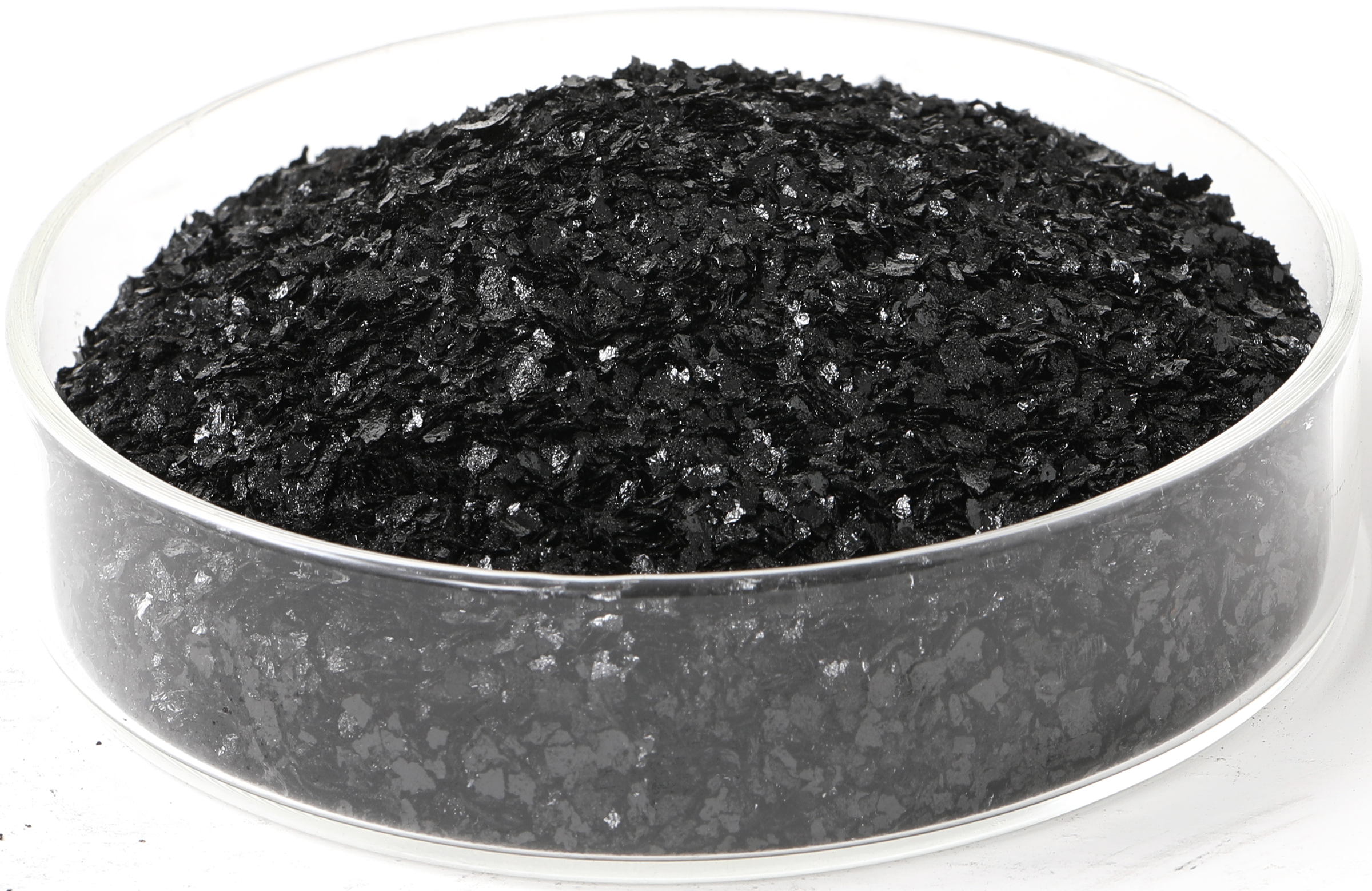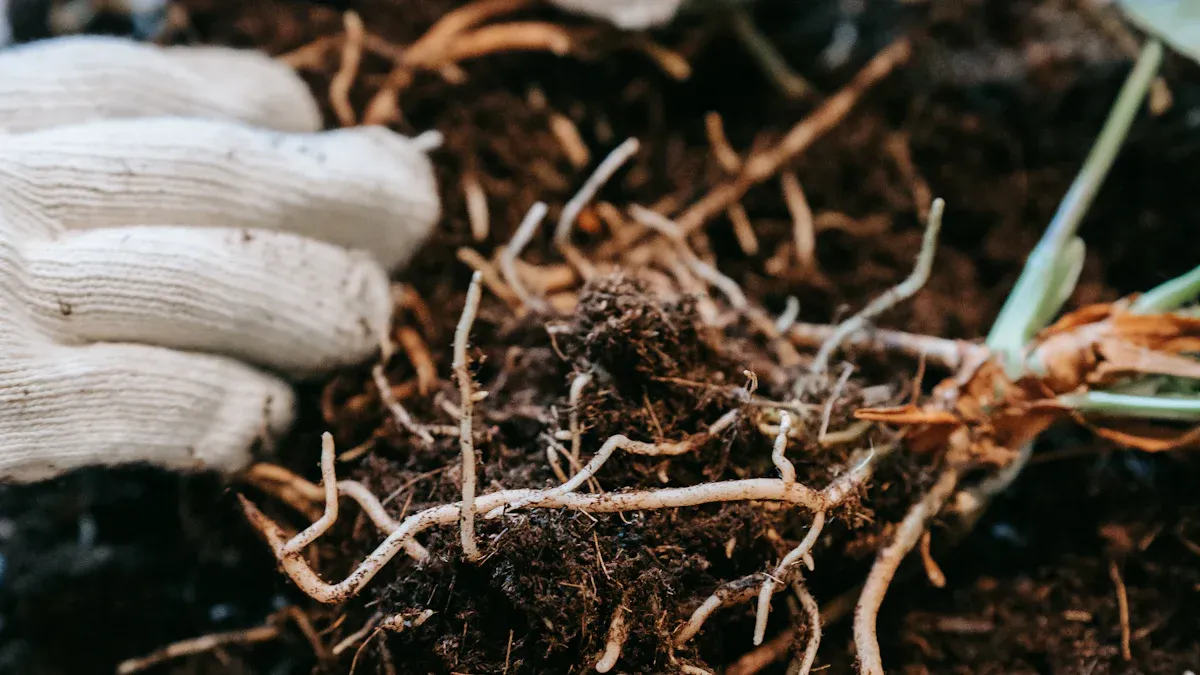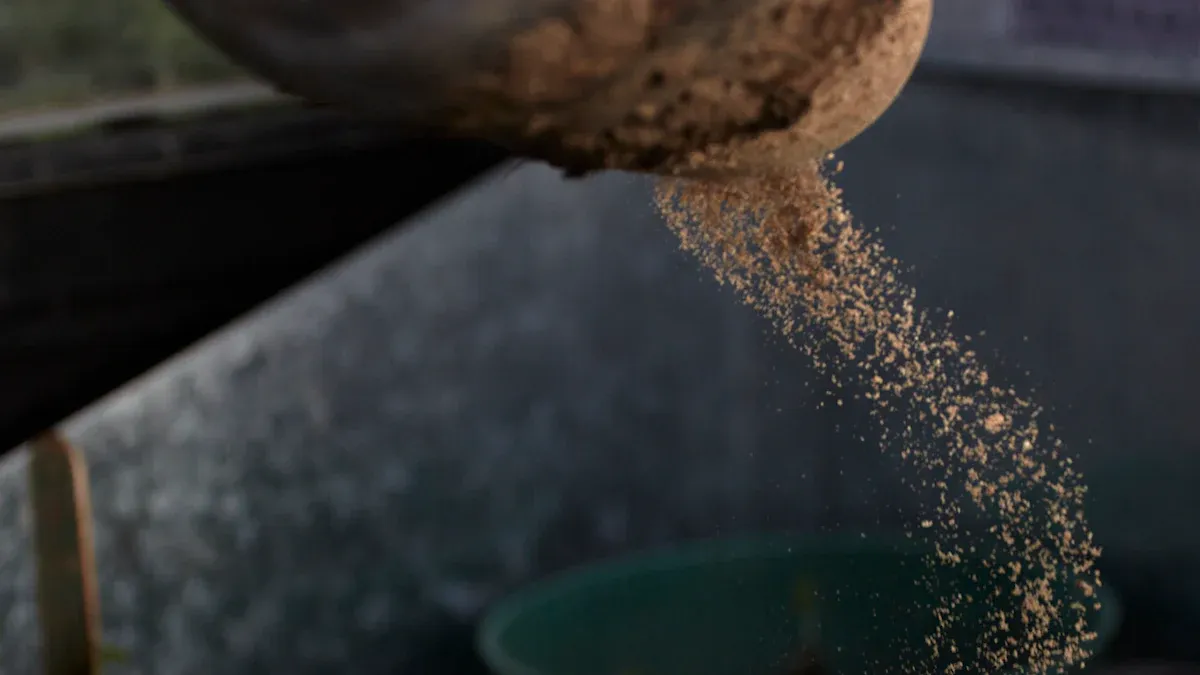Potassium fulvate versus potassium humate key differences and practical uses

When you look at potassium fulvate and potassium humate, you find big differences. These differences change how well they help plants. Potassium fulvate has smaller molecules. This helps plants take it in more easily. It mixes well with acids, alkalis, and organic matter. People make potassium fulvate by mixing fulvic acid with potassium hydroxide or potassium carbonate. Potassium humate comes from humic acid. Humic acid has bigger molecules and does not mix as well. These things matter because smaller and more mixable molecules, like in potassium fulvate, can help plants grow better and take in nutrients more easily.
Key Takeaways
Potassium fulvate has small molecules. These dissolve fast in water. They help plants take in nutrients quickly. This makes plants grow faster.
Potassium humate has bigger molecules. These help soil get better over time. They hold water and nutrients in the soil. This helps plants grow strong for a long time.
Use potassium fulvate to spray on leaves. You can also use it in drip irrigation. It gives plants a quick nutrient boost. It helps roots and shoots get stronger.
Use potassium humate by mixing it into soil. It makes the soil structure better. It feeds good microbes in the soil. It keeps nutrients in the soil longer.
Check your water quality before you choose. Think about what your crops need. Potassium fulvate works well in hard water. It is good for fast-growing crops. Potassium humate is better for making soil better. It is good for long-term farming.
Potassium Fulvate
Structure and Source
Potassium fulvate comes from natural minerals like weathered coal, peat, and lignite. People usually get it from leonardite or lignite. These have lots of humic and fulvic acids. Potassium fulvate has small molecules and a special shape. This shape lets it hold water and nutrients in soil. It has many groups like N–H bonds, hydroxyl, carbonyl, and ketone. These things make potassium fulvate more stable than other forms. It is more stable than some humic acid types. Potassium fulvate also gives you 60-70 mineral elements. These minerals help soil and plants grow well.
Tip: Potassium fulvate has lots of organic matter and a strong structure. This makes it an important part of soil humus.
Solubility and Activity
Potassium fulvate dissolves fast in acids and alkalis. This means you can mix it with many fertilizers. You can use it in many soil types. The fulvic acid in potassium fulvate helps it move through soil quickly. It reaches plant roots fast. Using potassium fulvate helps plant enzymes work better. These enzymes help with carbon and nitrogen in plants. Studies show potassium fulvate changes the soil’s microbes. It increases good bacteria and fungi. It lowers bad germs that cause disease. This makes soil healthier and crops get sick less.
Potassium fulvate makes soil microbes more active.
Roots and shoots grow better because nutrients move more easily.
Main Uses
You can use potassium fulvate in many ways on farms and gardens. It works as a soil conditioner, foliar spray, or in liquid fertilizer. Farmers add potassium fulvate to make soil better and hold more water. When you use it on crops like maize, onions, or vegetables, you get more and better crops. Potassium fulvate helps roots and shoots grow by making nutrients easier to get. It helps good microbes break down organic matter. This releases nutrients for plants. You can use potassium fulvate with other humic and fulvic acids. This gives the best results for your soil and crops.
Potassium Humate
Structure and Source
You can find potassium humate in many natural places. People often get it from oxidized coal like lignite or brown coal. Some companies use peat, soil, compost, or organic waste. They use alkaline solutions such as potassium hydroxide or sodium hydroxide to extract it. For example, scientists have made potassium humate from hazelnut husks. They wash, dry, and treat the husks with alkaline solutions. Scientists use special tools like NMR, SEM, and FTIR to look at its structure. Potassium humate is a water-soluble salt of humic acid. It has both humic and fulvic acids, but mostly humic acid. This gives potassium humate a complex structure with many groups. These groups help it work with soil and nutrients.
Note: The place and method used to get potassium humate can change how good it is.
Solubility and Activity
Potassium humate dissolves in water, but not as fast as potassium fulvate. The big molecules in humic acid make it move less in soil. Still, it mixes well with most fertilizers. Lab tests show potassium humate hydrates and dissolves under certain conditions. When you use it on seeds or plants, it shows strong biological activity. For example, maize seedlings treated with potassium humate grow longer roots. They also have more root branches. Their roots have more starch and protein. These changes help plants take up nutrients better. Field studies on crops like sugar sorghum show potassium humate helps plants grow and fight stress. You get healthier plants and better harvests.
Main Uses
You can use potassium humate in many ways to help soil and plants. Farmers and gardeners add it to soil to make it richer and hold more water. It helps soil keep nutrients and makes them easier for plants to use. Potassium humate also makes soil structure better and helps good microbes. In gardening, you can mix it with nitrogen fertilizer to help wheat grow and yield more. It helps cereal crops use nutrients better. The humic and fulvic acids in potassium humate help roots grow and take in more nutrients. They also help plants get nutrients like phosphorus, iron, and zinc. You see better root and shoot growth, stronger plants, and higher crop quality. Potassium humate acts as a biostimulant, helping plants handle stress and grow well in hard conditions.
Humic substances help soil stick together and keep water.
They help roots grow and take in nutrients.
Potassium humate helps farming and gardening stay healthy.
Difference Between Potassium Fulvate and Potassium Humate

Molecular Size and Composition
Potassium fulvate and potassium humate are not the same. Potassium fulvate has much smaller molecules than potassium humate. These small molecules move through soil fast and reach roots quickly. Potassium humate has bigger molecules that stay in the soil longer. They work more slowly. Potassium fulvate’s shape helps it hold water and nutrients well. Potassium humate has a more complicated shape with many rings and chains. This shape helps it make soil better over time. Both have humic and fulvic acids. Potassium humate has more humic acid. Potassium fulvate has more fulvic acid, which is lighter and more active.
Extraction and Production
Potassium fulvate and potassium humate come from natural things, but people get them in different ways. Potassium fulvate comes from humic acid found in weathered coal or peat. People use a process to separate the small fulvic acid molecules. Potassium humate comes from lignite or brown coal. People use potassium hydroxide in an alkaline process to get it. This way is popular because potassium hydroxide is safe and works well for organic farming. The table below shows the main ways they are made:
Aspect | Potassium Fulvate | Potassium Humate |
|---|---|---|
Extraction Method | Extracted from natural humic acid | Extracted from lignite using potassium hydroxide (KOH) in an alkaline extraction process |
Extractant | Derived from humic acid | Potassium hydroxide (KOH) preferred for safety and solubility |
Chemical Structure | Short carbon chain molecular structure | Aromatic hydroxycarboxylate |
Solubility | Soluble in water | Soluble in water due to alkaline extraction |
Application | Mainly agriculture and horticulture | Agriculture, forestry, animal husbandry, petroleum, chemical industry, building materials, medicine, environmental protection |
Note: Potassium hydroxide is the best way to get potassium humate. It is safe and dissolves well in water.
Solubility and Bioavailability
Potassium fulvate dissolves in water very fast. You can mix it with almost any fertilizer or spray. Its small molecules move quickly through soil and reach roots easily. This means plants can use it right away. Potassium humate also dissolves in water, but not as fast. Its bigger molecules move slowly in soil. They stay near the top and work for a longer time. Potassium humate helps soil hold nutrients for plants. Potassium fulvate gives plants a quick boost. Potassium humate helps soil stay healthy for a long time.
Application Differences
You use potassium fulvate and potassium humate in different ways because they work differently. Potassium fulvate is good when you want fast results. You can spray it on leaves, use it in drip irrigation, or pour it on soil. It helps plants take up nutrients quickly and grow strong roots and shoots. Potassium humate is better for making soil better over time. You can add it to soil to help it hold water, feed good microbes, and keep nutrients longer. Farmers use potassium humate in fields, gardens, forests, and even for fixing soil. Potassium fulvate is used more for crops that grow fast and need quick help. Potassium humate is best for big farms, fixing soil, and places where you want to make soil better for the future.
Potassium fulvate: Works fast, best for spraying on leaves and quick nutrient help.
Potassium humate: Works slowly, best for making soil better and helping plants stay healthy for a long time.
Tip: Use potassium fulvate if you want plants to grow fast. Use potassium humate if you want to make soil better for the future.
Uses

In Agriculture
Farmers use potassium fulvate and potassium humate in many ways. They often add them to fertilizers to help plants grow better. Potassium fulvate works fast when sprayed on leaves. It helps plants take in nutrients quickly. This makes plants grow stronger and healthier. Potassium humate is mixed into the soil. It helps the soil get better over time. Many farmers use potassium humate in irrigation water. This gives crops water and nutrients together. Using these products can help you get more crops from your fields.
Put potassium fulvate in liquid fertilizer for quick help.
Mix potassium humate with dry fertilizer for healthy soil later.
Use both in drip irrigation to feed roots right away.
Tip: Use potassium fulvate early for fast growth. Use potassium humate all season for long-lasting help.
In Horticulture
People who garden or work in greenhouses use these products too. Potassium fulvate can be sprayed on leaves to help flowers and veggies grow faster. Potassium humate is good for potting mixes. It helps soil keep water and nutrients for roots. Many gardeners use these to make raised beds or pots better for plants. You can also add potassium humate to compost to make it richer. Both products help plants handle stress and grow well in many ways.
Spray potassium fulvate on young plants for a strong start.
Add potassium humate to potting soil to keep water in.
Use both to help flowers, fruits, and veggies grow healthy.
Other Applications
Potassium humate and potassium fulvate are used outside farms and gardens too. Potassium humate is used on grass in parks and sports fields. It helps grass recover after lots of use. Some people use potassium humate to clean up dirty soil in the environment. Potassium fulvate is sometimes used in hydroponics to give plants nutrients without soil. These uses show that these products can help in many places.
Note: Always read and follow the label for best results with any fertilizer.
Choosing the Right Product
Factors to Consider
When picking between potassium fulvate and potassium humate, you should think about a few things. Each one works best in different ways. Here are some points to help you decide:
Water Quality: If your water has lots of calcium or magnesium, potassium humate might not work well. It can make clumps and stop working right. Potassium fulvate does not clump in hard water and stays stable.
Mixing with Fertilizers: Potassium fulvate mixes well with most fertilizers, even ones with trace elements. Potassium humate sometimes does not mix well, especially if the water is hard.
Speed of Results: Potassium fulvate works fast. You will see plants change quickly. Potassium humate works slowly and helps soil over time.
Type of Crop: Fast-growing crops or plants that need quick help do better with potassium fulvate. Potassium humate is better if you want to make soil good for many years.
Application Method: You can spray potassium fulvate on leaves or use it in drip irrigation. Potassium humate works best when mixed into the soil.
Desired Benefit: If you want strong roots, more vitamins, and better stress resistance, potassium fulvate gives these results fast. Potassium humate helps soil keep water and nutrients, so it is good for long-term use.
Tip: Always check your water and soil before choosing a product. This helps you make the best place for your plants to grow.
You have learned that potassium fulvate and potassium humate help plants in different ways. Potassium fulvate has small molecules. It works quickly in soil and when sprayed on leaves. Potassium humate has bigger molecules. It helps soil get better over time.
Pick potassium fulvate if you want plants to get nutrients fast and grow strong.
Pick potassium humate if you want to make soil healthy and help crops all season.
Remember: Look at what your crops need and check your soil before you choose. Picking the right one helps your plants grow better and give you more food.
FAQ
What is the best way to apply potassium fulvate?
You can spray potassium fulvate on plant leaves. You can also add it to water for irrigation. This helps plants get nutrients fast. Always read and follow the label for best results.
Can you mix potassium humate with other fertilizers?
Yes, you can mix potassium humate with most fertilizers. It works well in soil and with many plant foods. Check your water first because hard water can make it clump.
Does potassium fulvate work in hydroponics?
Potassium fulvate works well in hydroponic systems. It dissolves fast and helps plants get nutrients. You can put it right into the nutrient solution.
How often should you use potassium humate?
Use potassium humate every few weeks when plants are growing. This keeps soil healthy and helps plants grow strong. Always check the label for the right timing.
Is potassium fulvate safe for all plants?
Potassium fulvate is safe for most plants like veggies, flowers, and trees. You can use it in gardens, greenhouses, and farms. Try a small amount first to see how your plants do.
See Also
How Potassium Humate Enhances Plant Development Effectively
Exploring Humate Applications And Their Importance Explained
Sodium Humate’s Impact On Progressing Agriculture And Industry
